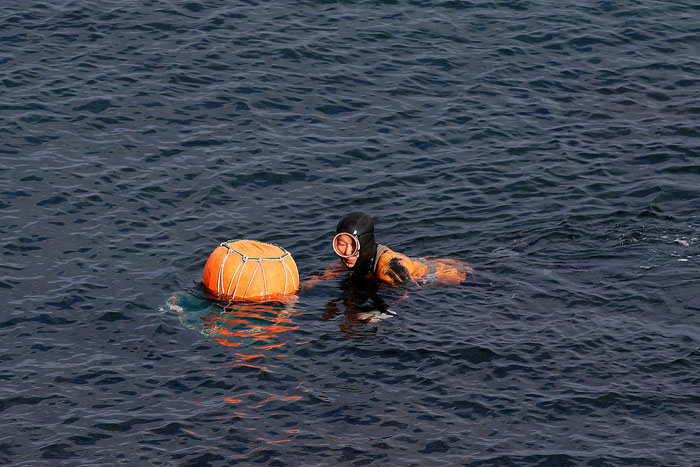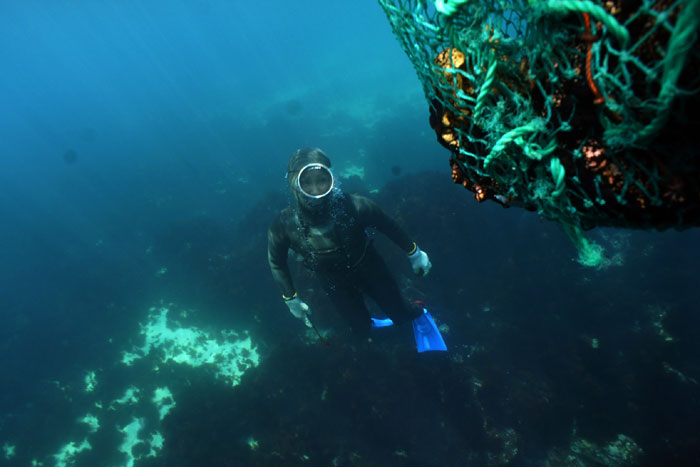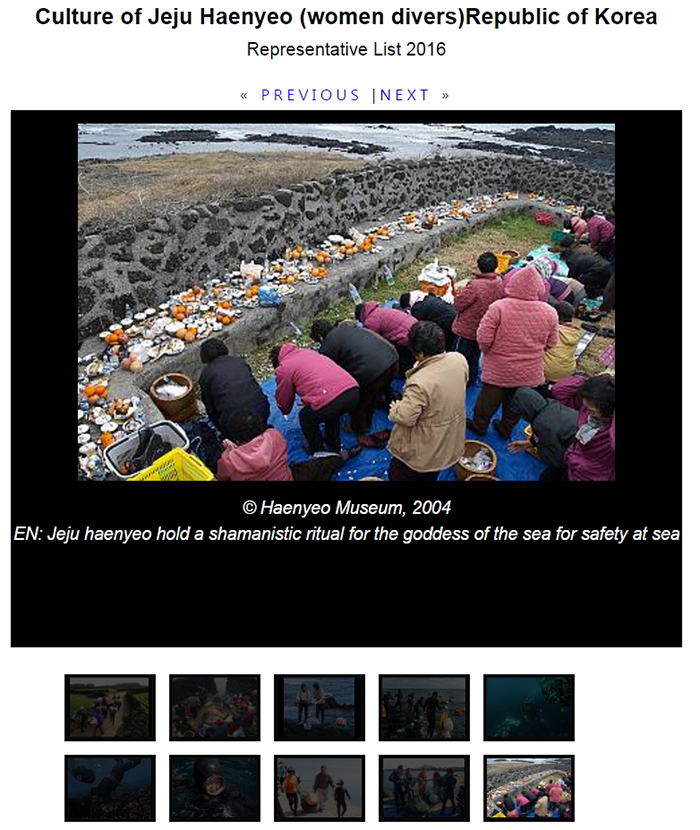The evaluation body at UNESCO recommended that the Jeju haenyeo divers be added to the list of the Intangible Cultural Heritage of Humanity items, the government's Cultural Heritage Administration (CHA) announced on Oct. 31.

UNESCO’s evaluation body recommended that the indigenous haenyeo skin diving women of Jeju Island be added to the Intangible Cultural Heritage of Humanity list. The photo shows a diver swimming off the coast of Jeju Island.
UNESCO’s evaluation body determines the results of the nomination to the list and gives advice to the Intergovernmental Committee for the Safeguarding of the Intangible Cultural Heritage.
The cultural heritage authorities predicted with optimism that the evaluation body’s recommendation will have a positive effect on the final decision of the 11th annual meeting in Addis Ababa from Nov. 26 to Dec. 2. so that then the Intergovernmental Committee for the Safeguarding of the Intangible Cultural Heritage can make a final decision.
In the nomination file, the CHA highlighted the significance of the female skin divers of Jeju Island, saying that their muljil (물질), or their diving to catch seafood without using any breathing apparatus, and their jamsugut (잠수굿), a shamanic ritual they practice onboard the boat before diving (muljil), praying to the goddess of the sea in a hope of safety, are both worthy of being enshrined on UNESCO's list. The applicants also spoke about the haenyeo norae (해녀노래), the songs the female divers sing while rowing their boats out to the sea, the role that women on the island play across the generations, and the divers' strong sense of identity, which is formed in each local community on the island.
Currently, Korea is home to 18 intangible cultural heritage items. This list includes the Jongmyo Jerye, or Royal Ancestral Rite (종묘제례), the Jongmyo Jeryeak, or Ritual Music at Jongmyo Shrine (종묘제례악), the process of kimjang (김장), or the making and sharing of kimchi, nongak, or community farming music (농악), pansori, a form of musical story telling (판소리), and namsadang nori, or traditional folk performance by male vagabond clowns (남사당놀이). If the traditions and community of Jeju's haenyeo divers are added to the list, it will be Korea’s 19th intangible cultural heritage item registered by UNESCO.

The famous female skin divers of Jeju Island dive to a depth of about 10 meters to catch seafood without using any breathing apparatus. Their importance to Jeju society is embedded in their muljil (diving to catch seafood), their jamsugut (shamanic practices they perform in a wish for safe diving), and in the haenyeo norae (songs female divers sing when they are onboard). The photo shows a diver in waters near the island trying to catch some seafood.

UNESCO is considering to register the haenyeo women skin divers of Jeju Island and their related rites and songs as some of humanity's intangible cultural heritage items.
By Yoon Sojung
Korea.net Staff Writer
Photos: Jeon Han Korea.net Photographer, Haenyeo Museum
arete@korea.kr
Most popular
- Grammy-winning producer calls Suga of BTS 'amazing artist'
- Animated 'KPop Demon Hunters' tops Netflix charts in 41 markets
- 'Squid Game' events to pump up K-Content Seoul Travel Week
- Reunited BLACKPINK releases video preview of world tour
- 'Universal love, family' themes fuel success of 'King of Kings': director
